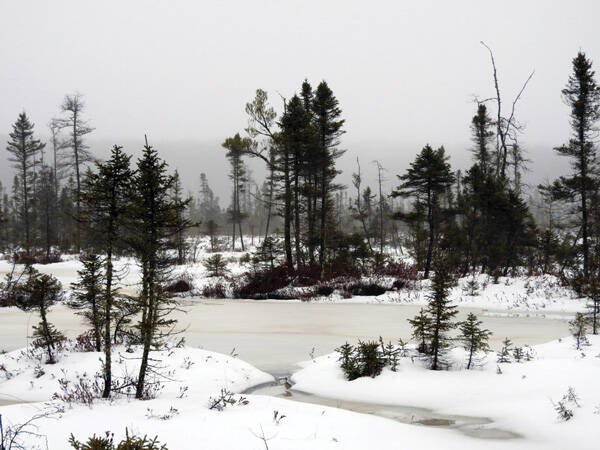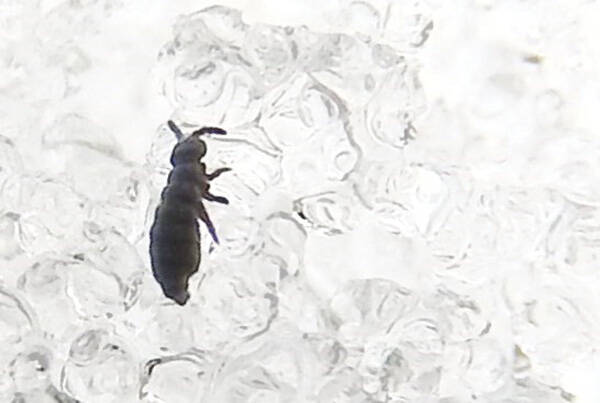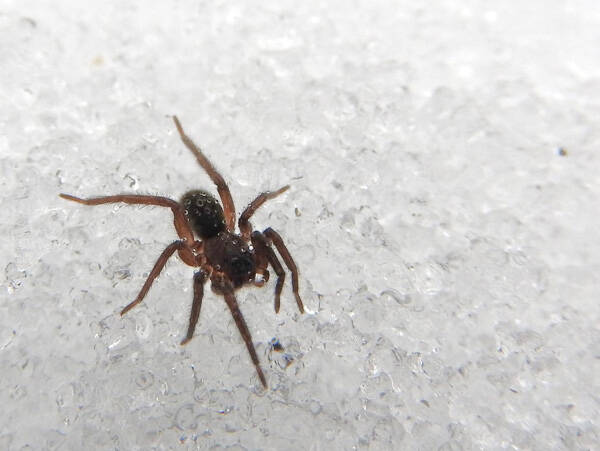News & Articles
Browse all content by date.

Mystical fog hung thick over the fen, and droplets of water glistened from the tip of each evergreen needle. Dark, craggy sculptures of black spruce trees faded into the mist with eerie calm; their silhouettes stark against a melting snowpack. The Namekagon Fen State Natural Area is a beautiful place in every season, even when March comes in January.
It seems like only yesterday that the dripping droplets came from sweat glistening at the tip of my nose, and we all squinted into the sweltering, late-July heat. On that visit, I brought along a TV crew and four teenage cast members to shoot an episode of “Aqua Kids” for public television. The show aired in November, and is now posted to their YouTube site (https://youtu.be/JSvjLd1LlBM). Watching the video, my toes remembered how warm the surface water on the bog felt, and how cold the bog pole remained when we pulled it up from 20 feet below the surface. We never found the bottom, but we did discover where the deep cold of winter hides.
The vibrant greens of July were nowhere to be seen on this most recent visit. Under the dim light and fog, the scene was etched in grayscale. With the Aqua Kids, I’d dissected a red-veined pitcher plant leaf and poured a mass of squirming larvae out of its miniature ecosystem. Those leaves are buried now, but the tall, dried stalks of their flowers poke up above the snow like periscopes searching for spring.

Life was humming then. The fen is silent now, and still. Until you look closer.
Shifting my focus from the faded distance, I noticed a smattering of black specks on the snow at my feet. Snow fleas! As I stared—trying to bring them into focus—they vanished one by one.
Snow fleas (also known as springtails) aren’t even insects. They do have six legs, but a lack of wings, simple instead of compound eyes, differences in molting, and a special mouthpart for drinking, set springtails apart from true insects. When startled, a snow flea releases a clasp, and a forked appendage snaps open against the ground. Launching up to 100 times their body length in an uncontrolled flight, they appear to vanish into thin air.
Springtails are unbelievably abundant in moist habitats, and happily live in the soil and leaf litter year-round. Just one or two species come out on the snow, though, and they have a unique protein that works as antifreeze down to about 21 degrees F.
While crouched low and peering at snow level to watch the snow fleas, we finally spotted a dash of color. On a snow-free hummock under the thick boughs of a black spruce tree, lay a ruby-red cranberry on a bed of emerald moss. The fog seemed to lift for a moment as the tangy juice burst onto my tongue.

A ripe cranberry provided the only splash of color through the fog.
Snowshoeing on the semi-frozen, snow-covered surface of the bog was slightly easier than wading through the drifts of soggy, summer sphagnum moss. Occasionally, though, we broke through into a snow cave propped up by a scaffolding of leatherleaf twigs. At the bottom of each hole, and often at the bottom of our footprints, was a little pool of slush.
I saw one collapsed tunnel of a meadow vole, but not more. In a normal winter, with cold temperatures and plenty of fluff, small mammals seek refuge in the subnivean zone at the boundary between earth and snow. This melt turned that magical world into a slushy mess capped by ice. I’m not sure how the former residents will manage.

At least one of the subnivean citizens came to the surface. The small black dot resolved into an eight-legged spider on the snow as I bent closer. It was hard to see details in the low light, but I tried for an extreme close-up with my camera. Later, on the computer, I zoomed in to discover hairy legs and a dew-covered abdomen.
Wolf spiders are common predators on the forest floor all year round. They overwinter as adults and sub-adults, and continue their lives in the subnivean zone. The cold doesn’t seem to slow them down as much as it slows down their insect prey, which gives them a hunting advantage. In the perpetual twilight under the snowpack, wolf spiders have another advantage. Two large eyes (in addition to two medium and four small eyes) give them excellent vision. A layer of special tissue in their eyes improves their sight in low light, and also results in eyeshine from probing flashlights.
Wolf spiders remain active all winter, and this one collected fog on its bristly hairs. The dark bodies of spiders on the surface of the snow occasionally absorb so much heat from the sun that they begin to melt themselves into a divot. There was no sun today, but fog had condensed into sparkling water droplets on everything in the fen—including each of the spider’s bristly hairs. With the long view obscured these days, beauty must be found close at hand.
Special Note: Emily’s book, Natural Connections: Exploring Northwoods Nature through Science and Your Senses is here! Order your copy at http://cablemuseum.org/natural-connections-book/. Listen to the podcast at www.cablemusum.org!
For 50 years, the Cable Natural History Museum has served to connect you to the Northwoods. Come visit us in Cable, WI! Our new phenology exhibit: “Nature’s Calendar: Signs of the Seasons” is open through March 11.
| Tweet |


